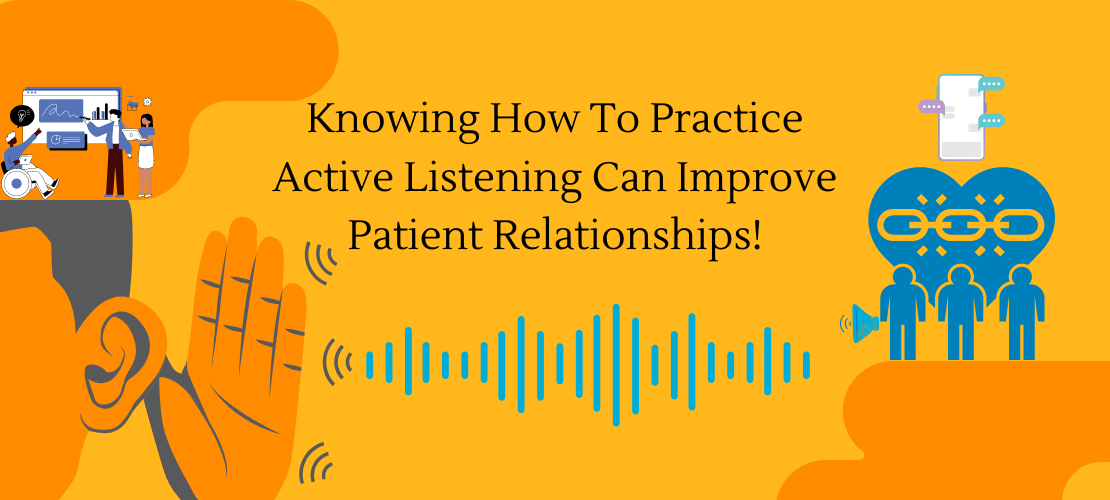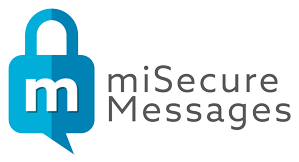
Knowing How To Practice Active Listening Can Improve Patient Relationships!
Active listening is emphasized and popular within healthcare, yet how does one become successful while practicing active listening? Our previous communication-based blogs have highlighted what successful leaders do! Leaders build trust through listening and maintain social relations by empowering individuals. Incredibly vital for residents who are training. To build trust with a patient, healthcare providers need to display empathy. Improving patient and peer relationships can immensely impact quality care and performance. When technology advances, so are healthcare; equipping communication knowledge will enhance social relations with other providers and patients too! Understanding how technology impacts communication will allow providers to mitigate miscommunication and reduce medical errors. A HIPAA-compliant text messaging app will secure patient health information (PHI) and allow providers to send sensitive information to another provider safely. Here are some tips on improving active listening!
Active Listening
Patients are diverse, and patient health is even more so! Many factors affect a patient’s health: lifestyle, habits, diet, culture, gender, mental health, medications, allergies, etc. Active listening will encourage patients to discuss their symptoms and current medical conditions more comfortably. Taking another step further into active listening is noticing vocal tone, feelings, body language, and nonverbal cues. Patients favor healthcare providers who listen because listening conveys respect. In our previous blog about transformational leadership, listening builds leader-to-follower trust and relationships. Applying the same to patients will improve patient to provider relationship and allows a patient to feel comfortable coming back. When healthcare providers listen, listening helps create a psychologically safe environment for patients and other providers. Not listening will cause burnout for providers and give ineffective or undesired treatment to patients. Learning active listening techniques requires the following:
- Have patients talk about their feelings.
- Ask open-ended questions.
- Respond to the patient’s emotions empathically.
- Avoid yes or no questions.
- Provide verbal feedback such as “Ok, yes, makes sense.”
- Allowing patients to reflect in response to questions.
- Let the patient do most of the talking.
- Affirm the patient’s abilities, healthy behaviors, and past decisions.
- Paraphrase what the patient communicated.
- Reflect on the patient’s thoughts, feelings, and behaviors.
- Throughout the conversation, apply reflective listening to keep the patient and care team on the same page.
- Maintaining eye contact.
- Limit screen time documentation.
- Nod while the patient’s speaking.
- Avoiding medical jargon is highly appreciated by patients.
- Limit interruptions.
- Maintain a calm tone when speaking to the patient.
- Follow through on promises and agreements made with the patient.
Empathy and Mindfulness
The healthcare provider must express empathy to improve a patient’s emotional, behavioral, and cognitive health. Eliciting significant changes to how much a patient would disclose to the provider and concerns about a treatment plan. When providers use supportive communication, not only will patients feel less anxious there’s also a decrease in feelings of hopelessness. Treating the patients as individuals rather than diseases impacts their perception of quality care. Extending empathy to patients and other providers can strengthen social relations. Becoming mindful of what patients are experiencing will allow providers to respond more appropriately. Emotional intelligence uses awareness; having self-awareness and attention to others is beneficial for providers to understand how to practice mindfulness when interacting with a patient. Here are the following examples of empathy expressions that patients favor:
- Emotionally present.
- Reassuring words.
- Supportive communication.
- Attention to the patient’s body language.
- Emotional connection.
Reflecting on the service will allow providers to understand how to prepare for the next appointment and future patient care. In our previous blog about improving communication, providers will benefit from learning to incorporate communication and leadership skills in delivering adequate patient care.

